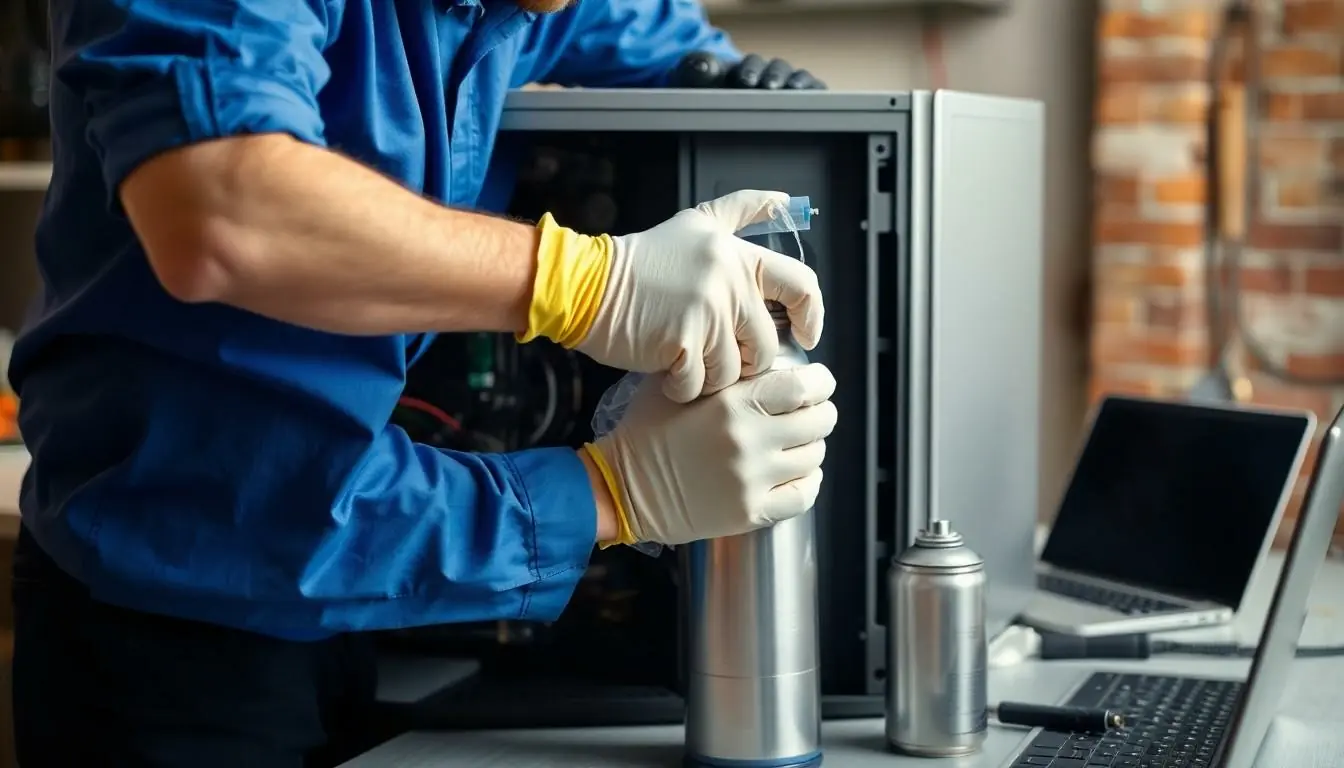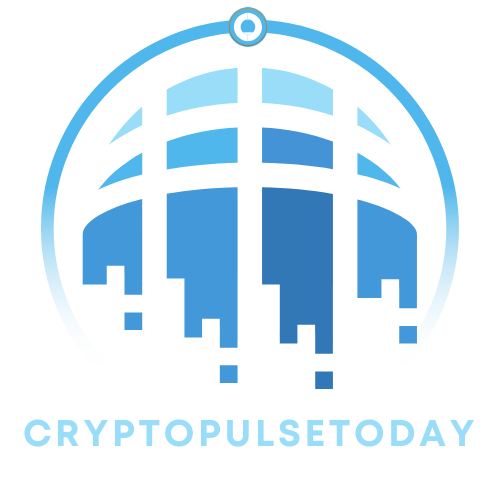Table of Contents
ToggleIn a world where computers are as essential as coffee, keeping that shiny machine running smoothly is crucial. Imagine your computer as a high-maintenance diva; it needs regular pampering to avoid dramatic meltdowns. Neglecting hardware maintenance can lead to catastrophic failures, and nobody wants to be the one left staring at a blank screen while their work deadline looms like a storm cloud.
Overview of Computer Hardware Maintenance
Regular computer hardware maintenance ensures seamless operation and longevity of equipment. Cleaning components like fans and heatsinks removes dust, preventing overheating and additional wear. Checking connections and cables reduces the risk of electrical issues, ensuring everything functions correctly.
Routine checks of hard drives identify potential failures early. Utilizing monitoring software can track performance metrics, allowing users to address issues before they escalate. Updating firmware and drivers enhances compatibility and security, providing better overall performance.
Replacing aging components keeps systems running efficiently. Upgrading RAM and SSDs boosts speed and responsiveness, especially for resource-intensive tasks. Scheduling maintenance tasks during off-peak hours minimizes disruption, maintaining productivity.
Backup systems play a critical role in protecting data. Regularly backing up data ensures recovery in case of hardware failure. Utilizing both cloud storage and external drives offers redundancy, safeguarding valuable information.
Documenting maintenance procedures assists in tracking performance history. Keeping records of repairs and upgrades informs future decisions, improving the overall maintenance process. Educating users about the importance of regular upkeep fosters a culture of responsibility, leading to fewer technical issues.
Adopting these maintenance practices can significantly reduce the likelihood of major failures. Investing time in hardware upkeep not only enhances performance but also extends the lifespan of computer systems. Prioritizing maintenance ultimately leads to more reliable and efficient computing experiences.
Importance of Regular Maintenance

Regular maintenance plays a crucial role in keeping computers running smoothly. By following best practices, users maximize their devices’ efficiency and reliability.
Enhancing Performance
Regular cleaning of internal components prevents dust accumulation, which enhances airflow and cooling efficiency. Monitoring software updates keeps systems secure and optimizes performance. Upgrading key components like RAM and SSDs can significantly boost speed, allowing for multitasking and faster program load times. Consistent checks on hard drives help identify potential failures early, minimizing the risk of data loss. Utilizing reliable antivirus solutions ensures protection against malware, enhancing overall system health.
Extending Lifespan
Maintaining computers extends their operational lifespan. Regular inspections and timely replacements of aging components prevent breakdowns. Dust buildup can damage internal parts, leading to failures. Scheduling maintenance tasks during off-peak hours reduces disruption and encourages routine care. Implementing a backup strategy using both cloud storage and external drives ensures data safety, contributing to long-term usability. Documenting maintenance procedures assists in tracking performance trends and making informed decisions about future upgrades.
Common Hardware Issues
Computer hardware faces several common issues that affect performance and longevity. Understanding these problems enables proactive maintenance and timely interventions.
Overheating Components
Overheating components occur due to inadequate cooling and airflow. Fans may fail, thermal paste could degrade, or dust might obstruct vents. High temperatures lead to system instability, with potential shutdowns. Regularly cleaning fans and heatsinks improves airflow and cooling efficiency. It’s essential to monitor temperatures using software tools. Consistent checks help prevent serious damage from prolonged overheating, safeguarding critical components.
Dust Accumulation
Dust accumulation silently impacts computer performance. Dust particles clog fans and settle on circuit boards, causing overheating and interference. Components can sustain damage from excessive heat over time. Regular cleaning intervals help mitigate dust buildup. Utilizing compressed air to blow dust from intricate areas enhances efficiency. Scheduling maintenance every few months ensures components remain clean and functional. Keeping environments free from dust minimizes the risk of hardware failures and extends device lifespan.
Maintenance Best Practices
Regular maintenance practices significantly enhance computer performance and prolong lifespan. Adopting effective routines minimizes operational disruptions.
Cleaning Procedures
Keeping components clean plays a vital role in preventing overheating and ensuring proper airflow. Utilize compressed air to blow dust out of fans, heatsinks, and vents. Schedule cleaning intervals every three to six months based on usage. Regularly check for dust build-up inside the case, ensuring no critical components are obstructed. Maintain a lint-free cloth to wipe down surfaces and prevent static build-up. Implementing thorough cleaning helps maintain optimum performance and extends machine longevity.
Updating Drivers and Firmware
Updating drivers and firmware ensures compatibility and enhances performance. Regular checks for updates from manufacturers keep systems secure and efficient. Scheduled updates every month can help users stay ahead of potential issues. Installing the latest versions often includes important security patches and performance improvements. Using dedicated software tools can simplify the detection and installation of needed updates. Staying proactive in firmware updates aids in overall system stability and efficiency.
Tools for Hardware Maintenance
Successful hardware maintenance relies on the right tools. Utilizing proper equipment not only simplifies tasks but also enhances overall performance.
Essential Tools
Screwdrivers are crucial for accessing internal computer components. Users should invest in a set of precision screwdrivers to handle various screws. Pliers help with gripping and removing connectors securely. Cleaning supplies, such as lint-free cloths and compressed air, are necessary for dust removal. Thermal paste ensures optimal heat transfer when replacing CPUs or GPUs. Additionally, an anti-static wrist strap protects sensitive components from static electricity. These essential tools create a solid foundation for effective hardware maintenance.
Recommended Software
Utilizing system monitoring software can significantly improve hardware maintenance. Applications like HWMonitor report on temperatures, voltages, and fan speeds, helping identify potential issues early. Disk check utilities, such as CrystalDiskInfo, provide insights into hard drive health and status. Regularly employing backup software secures important data against loss. Malware detection tools offer protection against threats that can compromise system integrity. These recommended software solutions empower users to maintain their computers effectively, ensuring optimal performance and reliability.
Regular computer hardware maintenance is essential for ensuring optimal performance and longevity. By implementing simple practices like cleaning components and checking connections, users can prevent significant issues that lead to frustrating downtime.
Investing time in routine checks and updates not only enhances security but also boosts efficiency, making everyday tasks smoother. With the right tools and techniques, anyone can maintain their system effectively.
Ultimately, a proactive approach to hardware upkeep translates to a more reliable computing experience, minimizing disruptions and maximizing productivity. Embracing these maintenance habits will keep computers running at their best for years to come.




